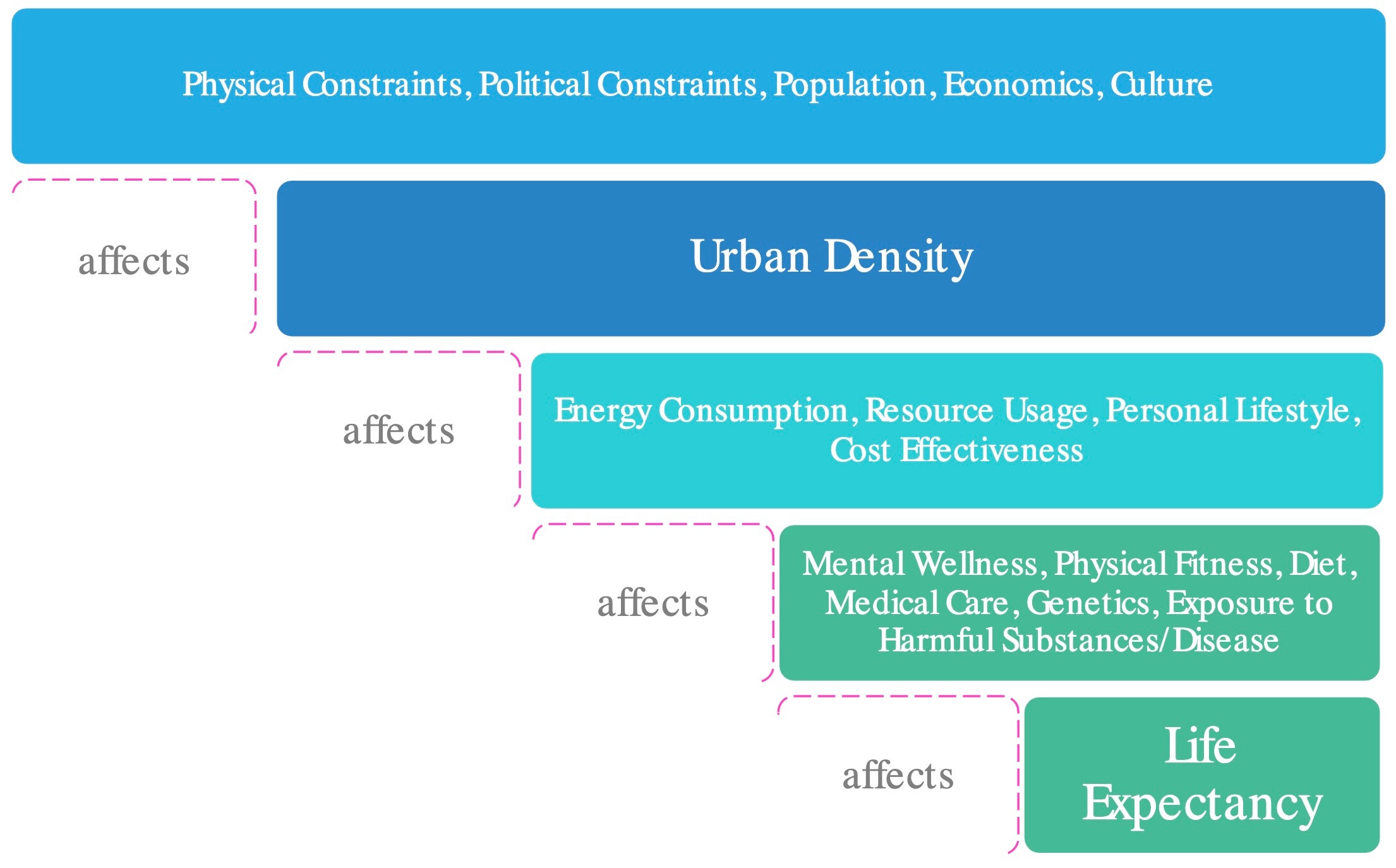To examine the correlation between population density and life expectancy in urban contexts
Technology & Design
Skidmore, Owings & Merrill (SOM), Chicago
Description
There is a positive correlation between life expectancy and population density, education, income, and carbon emissions across United States, Canada, Europe, and Asia cities. In terms of density and energy consumption, North American cities tend to have a lower density and higher energy consumption, while Asian cities tend to have a higher density and lower energy consumption. Why average life expectancy in Asia has grown consistently faster than that of the U.S. Across the board? Is it because of greater development booms over that time period. Studies link the urban environment with a daily behavior, walking, which directly affects average life expectancy. A common perception today is that dense urban environments are inherently detrimental to human health and wellbeing. Is this true? Cities tend to use resources more efficiently due to economies of scale and shared resources. Aspects of the urban environment contribute to the health and wellbeing of the people. Is there a shared understanding of the effects of density on people? Are there implications related to sustainability, accessibility, aesthetics, functionality and the cost-effectiveness of the built environment?





